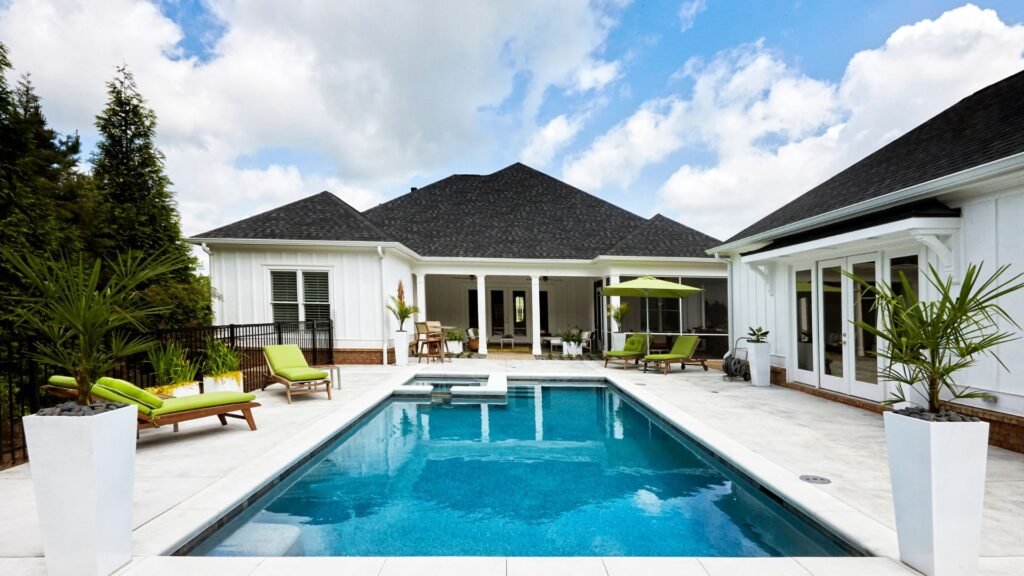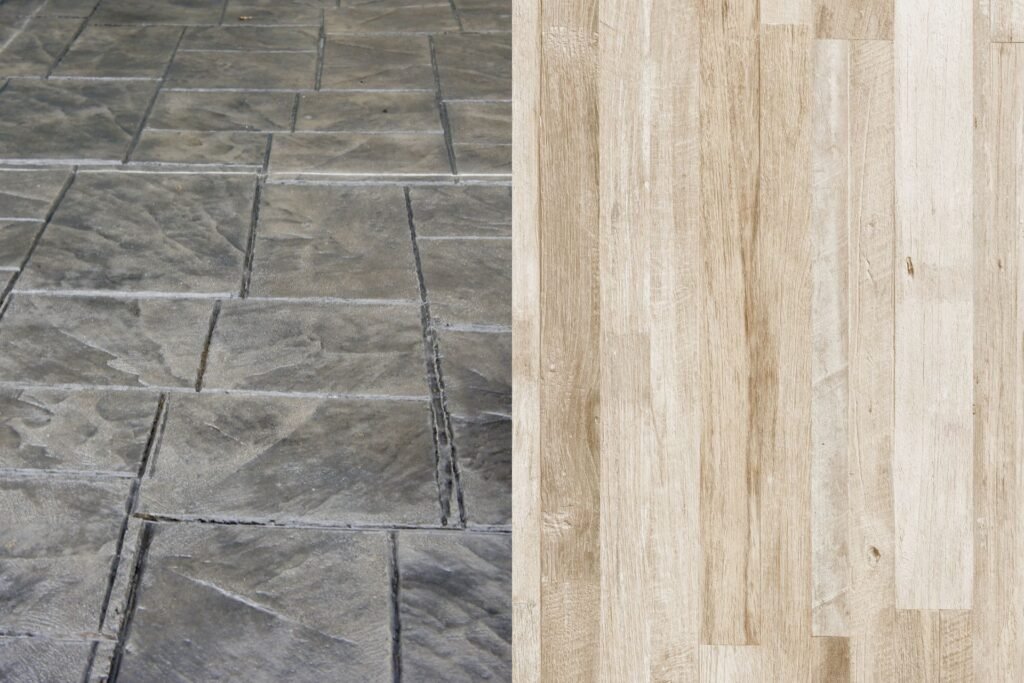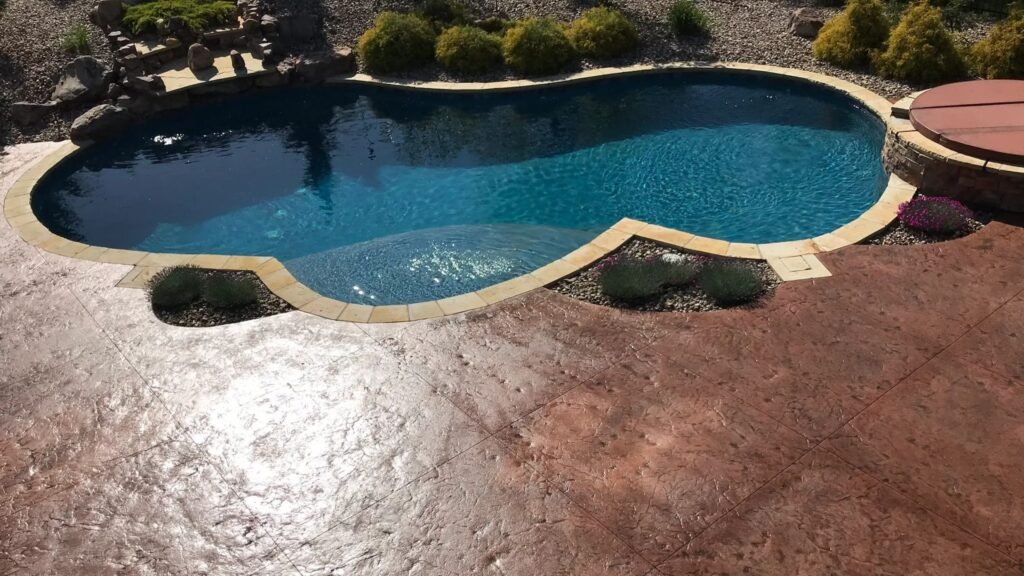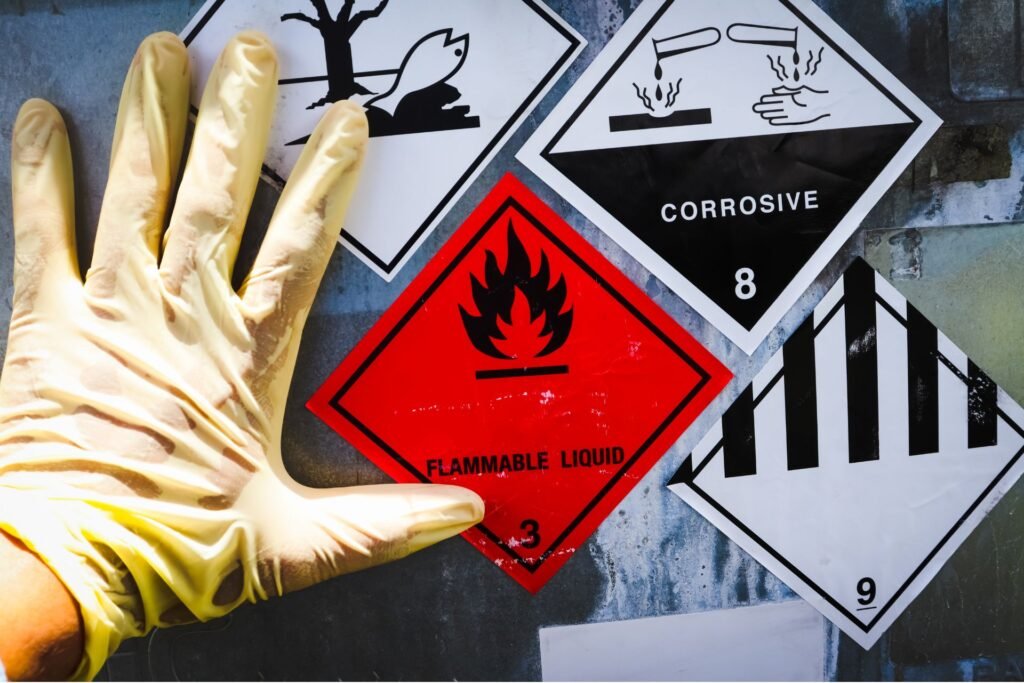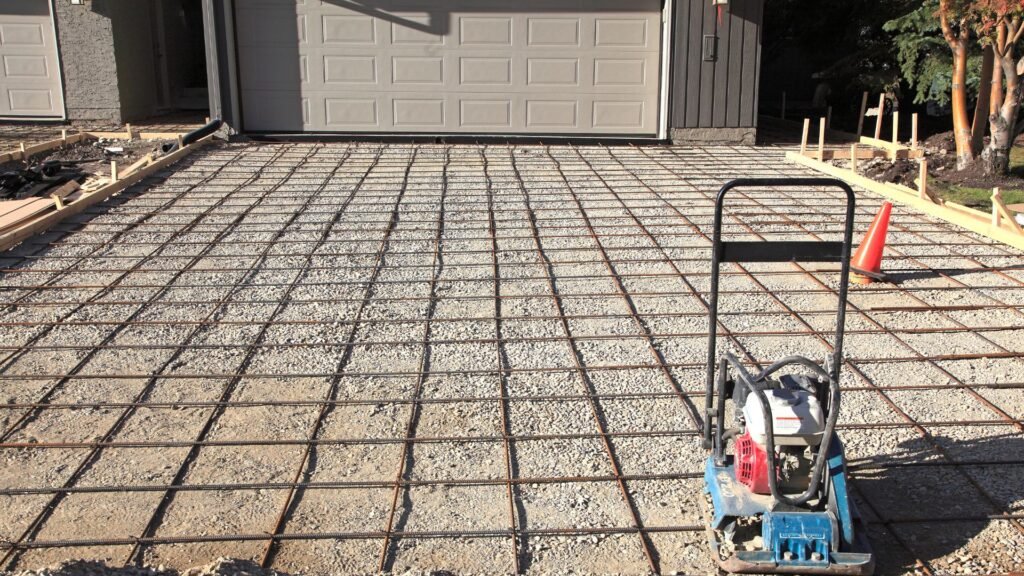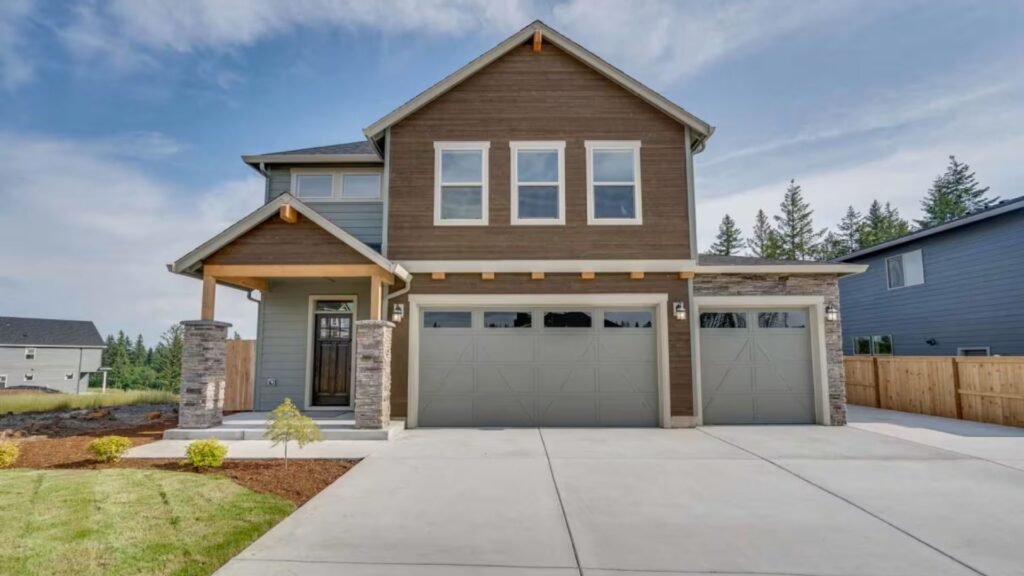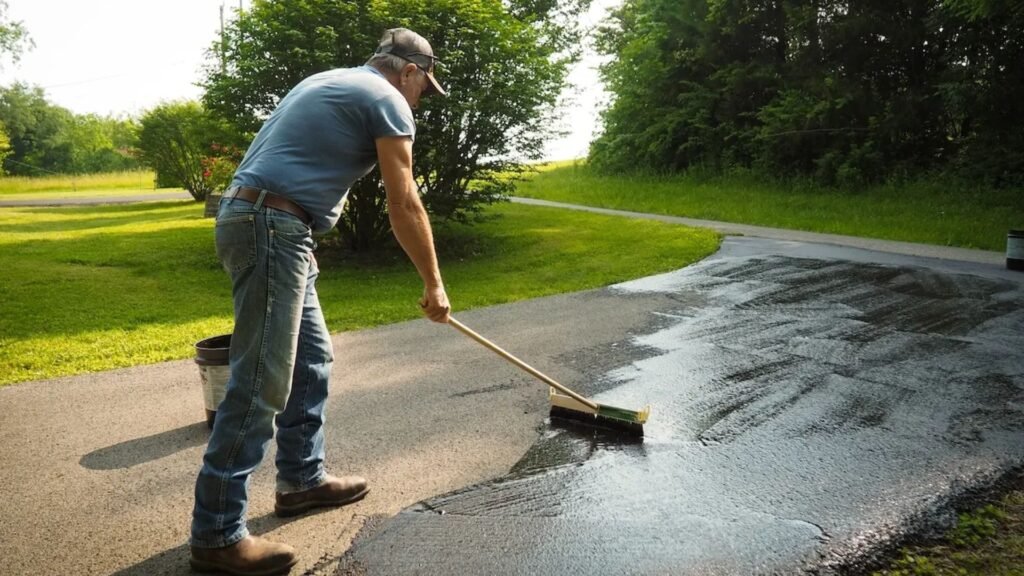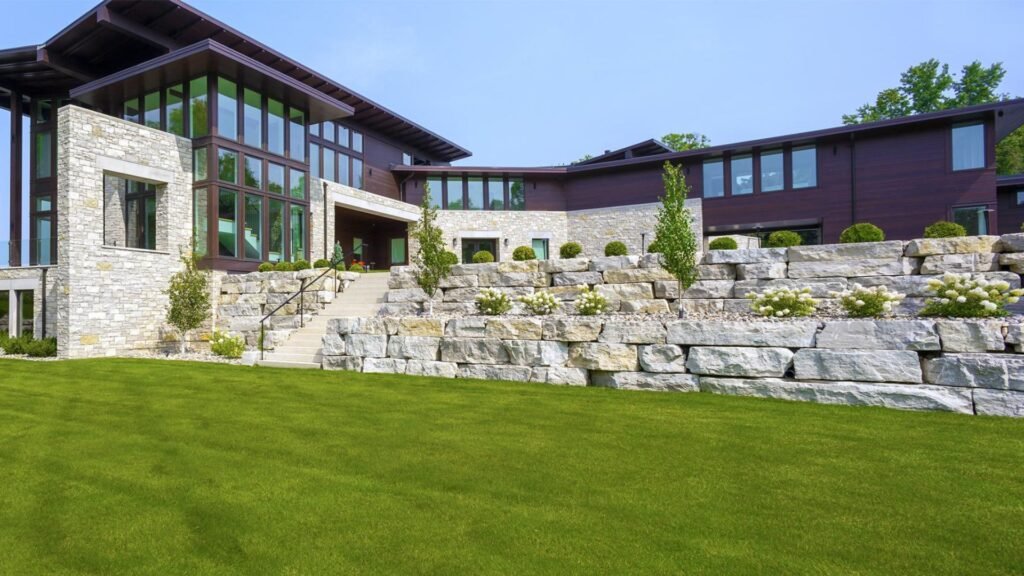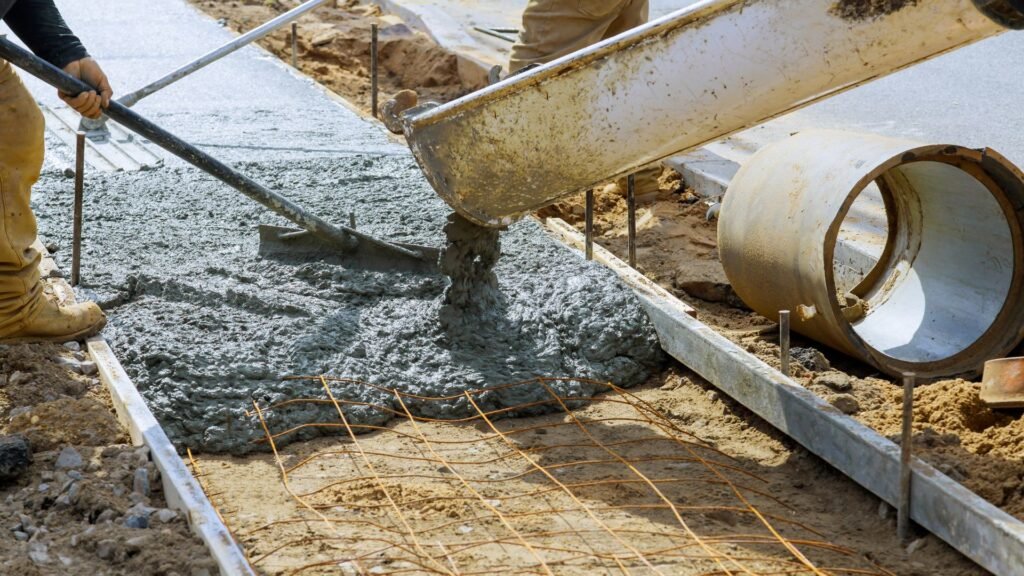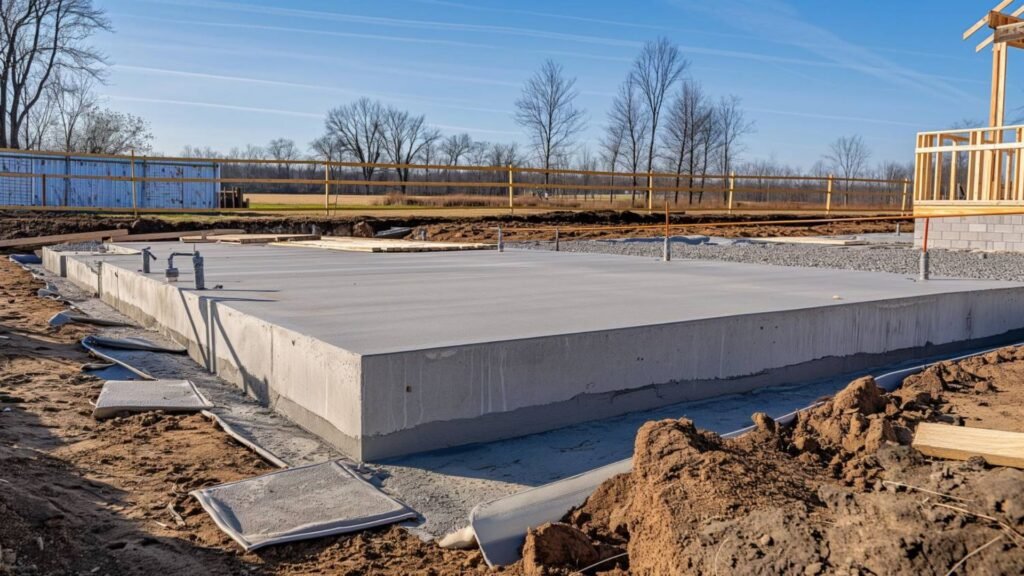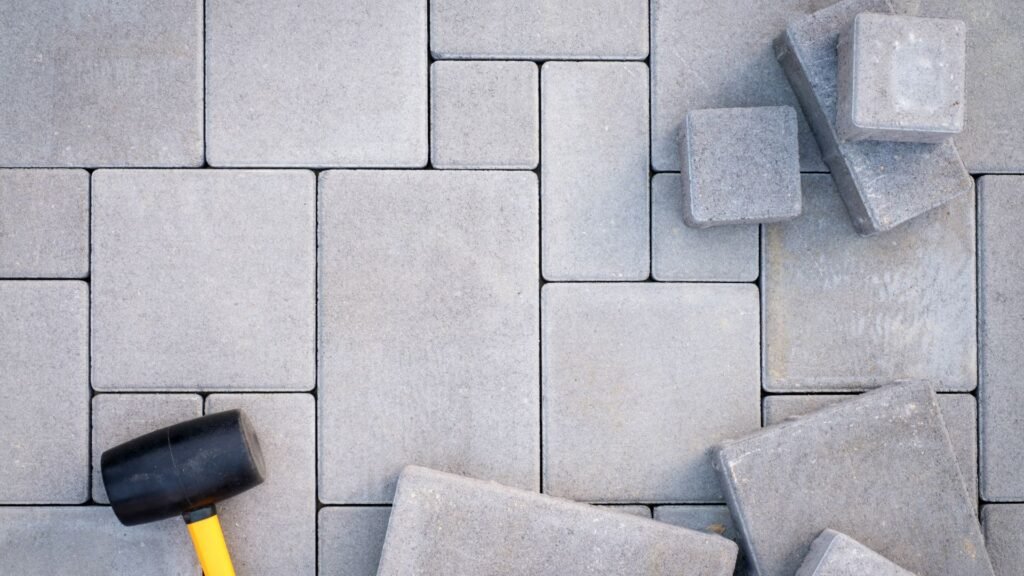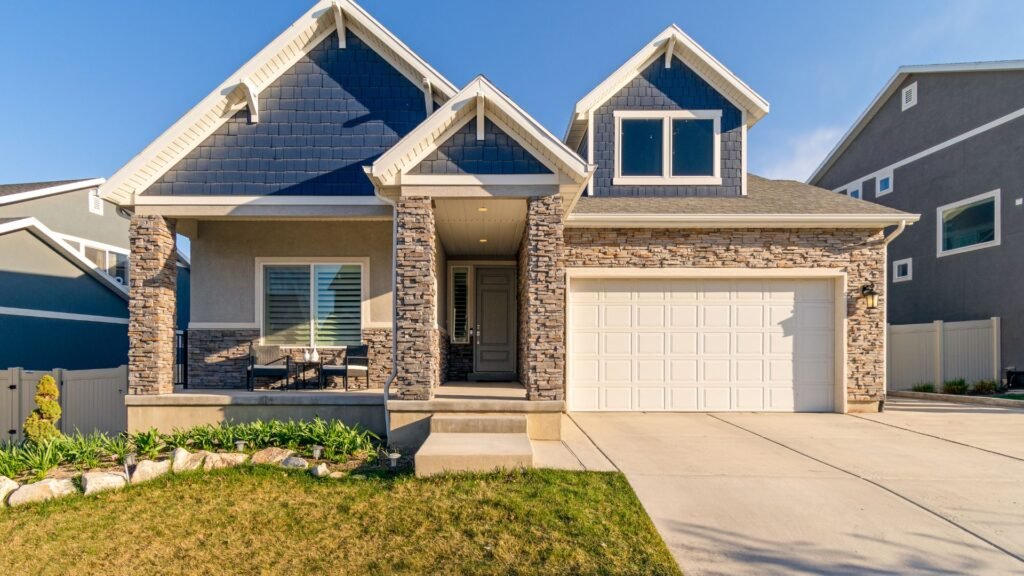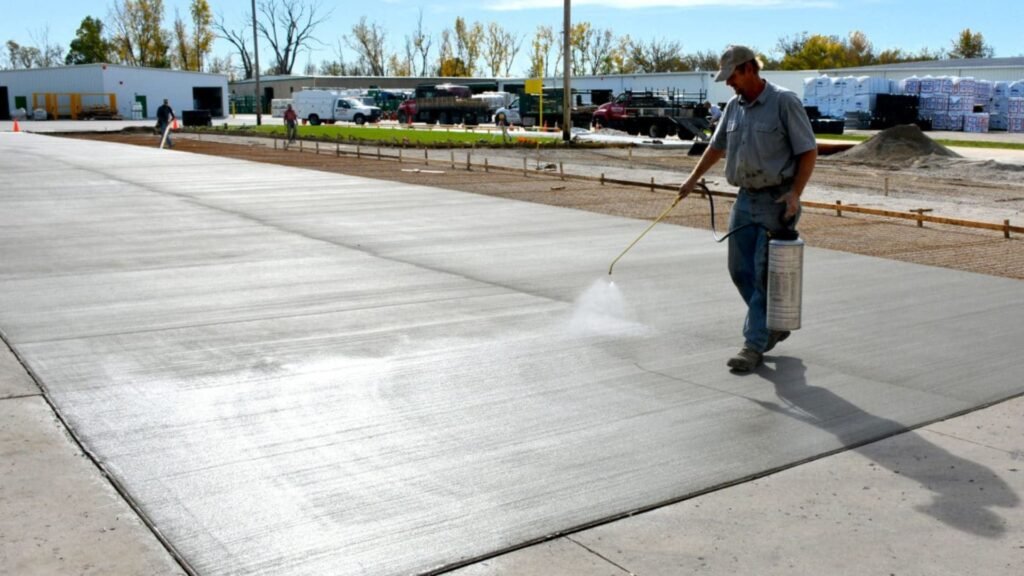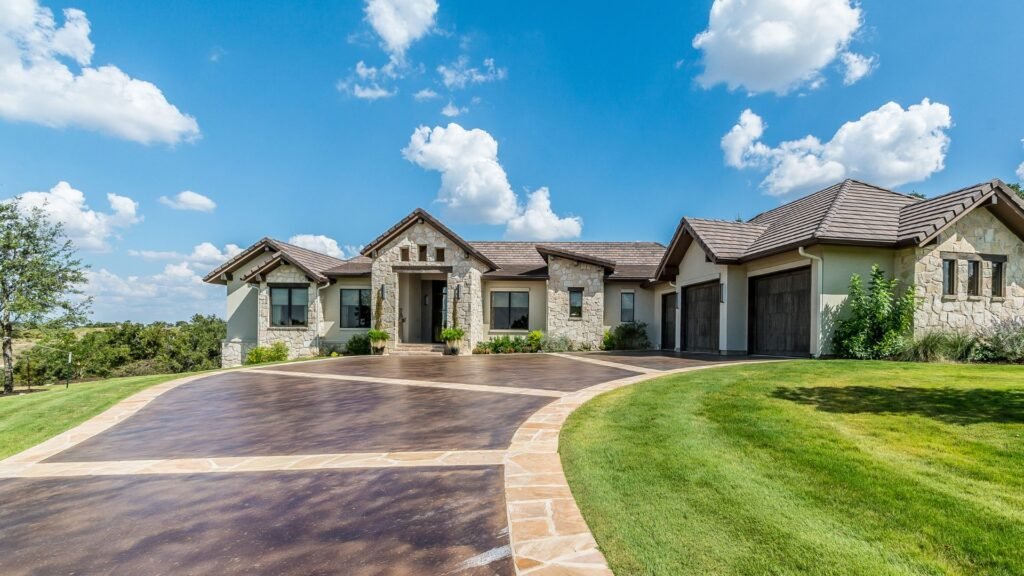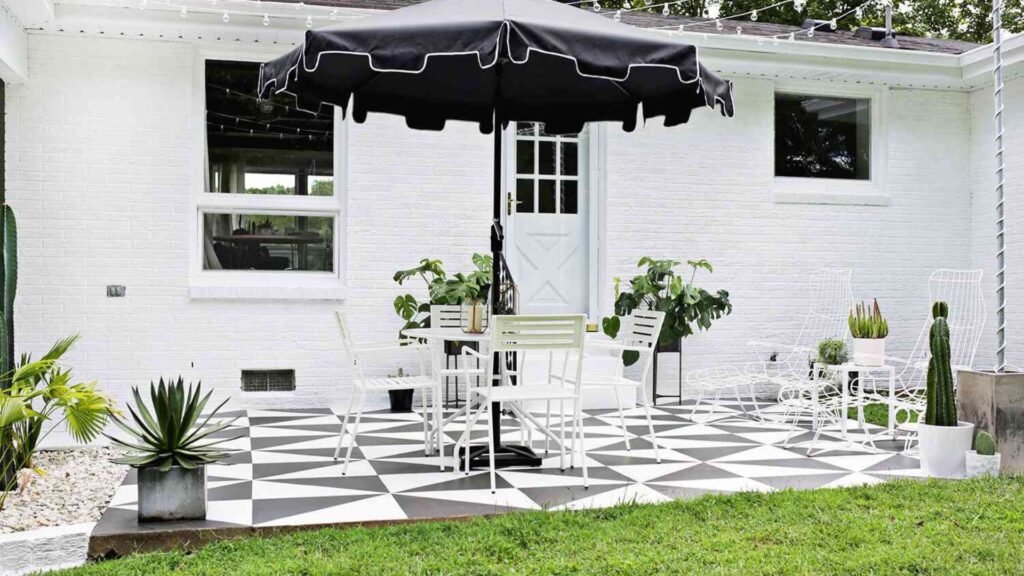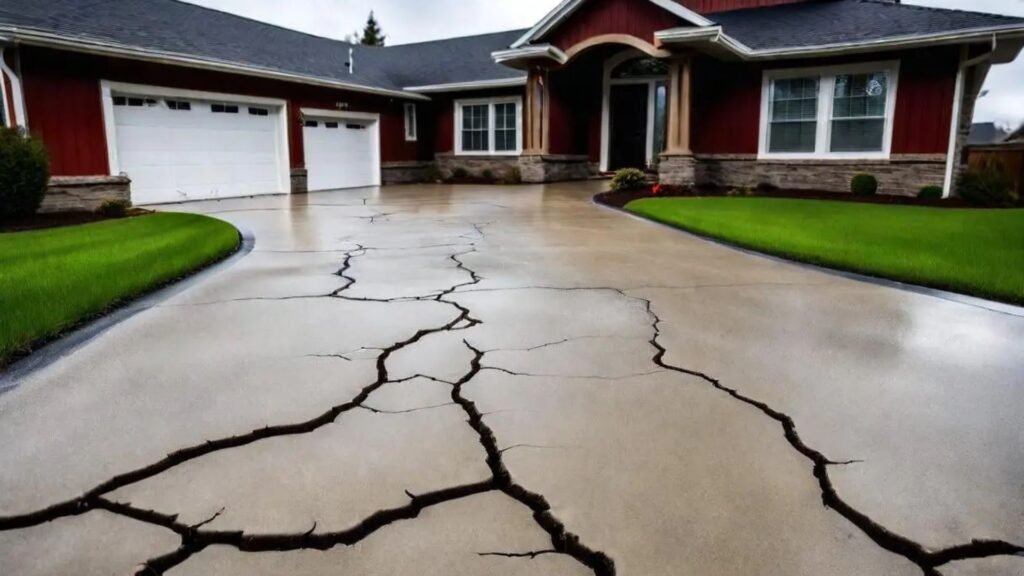Welcome to our guide on understanding how chlorine from your pool may affect the concrete surrounding it. If you’re a pool owner, you’ve probably wondered whether the chemicals that keep your water clean and safe could be causing harm to the very surfaces that make up your pool area. Chlorine is essential for maintaining hygiene, but it can also raise concerns about long-term exposure to materials like concrete. In this post, we’ll explore how chlorine interacts with concrete, common signs of potential damage, and, most importantly, ways to protect your pool’s surrounding area to ensure both beauty and durability for years to come.
Chlorine from your pool can potentially damage concrete over time, especially if the chlorine levels are consistently high. Prolonged exposure may cause concrete surfaces to weaken, crack, or show signs of erosion. However, proper pool water management, including maintaining balanced chlorine levels and sealing the concrete, can significantly reduce the risk of damage and prolong the lifespan of the surrounding area. Regular cleaning and upkeep also play a crucial role in preventing long-term harm from pool chemicals.
Table of Contents
Understanding Chlorine’s Role In Pool Maintenance
What is Chlorine and Why is It Important?
Chlorine is a critical component in maintaining a healthy, safe swimming environment. Acting as a powerful disinfectant, chlorine helps to eliminate harmful bacteria, viruses, and other pathogens that can thrive in pool water. Without proper disinfection, pools can become breeding grounds for these microorganisms, which pose serious health risks, including skin infections, gastrointestinal problems, and even respiratory issues.
When chlorine is added to a pool, it reacts with water to form hypochlorous acid, which is responsible for breaking down and neutralizing contaminants. This process, often referred to as sanitization, keeps the water clean, clear, and safe for swimmers. In short, chlorine acts as a defense mechanism against waterborne illnesses, ensuring that your pool remains hygienic.
Chlorine’s role doesn’t stop at disinfection. It also helps to oxidize organic matter, such as sweat, oils, and even leaves that fall into the pool. By breaking down these materials, chlorine keeps the water balanced and helps prevent unsightly algae growth, cloudiness, and unpleasant odors.
Chlorine in Swimming Pools: Common Misconceptions
There are several misconceptions when it comes to using chlorine in swimming pools, which can lead to unnecessary concerns. One common myth is that chlorine can damage pool surfaces or equipment. However, this only becomes a risk when chlorine levels are significantly higher than recommended. When used properly and in the correct concentrations, chlorine is completely safe for pool surfaces, liners, and filters.
Another misconception is that the smell of chlorine indicates its presence in high quantities. A strong chlorine smell is usually a sign that the pool is lacking free chlorine, as it suggests that chloramines (compounds formed when chlorine reacts with contaminants) are present. Regularly checking and maintaining proper chlorine levels can prevent these issues and keep the pool water in pristine condition.
It’s also worth addressing the concern that chlorine can irritate the skin or eyes. In most cases, irritation is caused by improperly balanced pool water rather than chlorine itself. When pool water is balanced in terms of pH and chlorine levels, swimmers should not experience discomfort. By staying within the recommended chlorine range, pool owners can enjoy the full benefits of chlorine without any of the drawbacks.
In conclusion, chlorine is an indispensable element in pool care, offering protection against harmful microbes while maintaining the cleanliness and balance of the water. By understanding its role and addressing misconceptions, pool owners can ensure that their pools remain safe, healthy, and enjoyable for all users.

How Chlorine Can Affect Concrete
Concrete is a highly durable material, which is why it’s frequently used for pool surrounds. However, exposure to chemicals like chlorine can have a long-term impact on its structure. Let’s dive deeper into how chlorine can affect concrete, what exactly happens during chemical interactions, and whether chlorine is the only factor to blame for potential damage.
Concrete Composition and Pool Surrounds
Concrete is a versatile building material composed primarily of cement, water, and aggregates (sand, gravel, or crushed stone). When mixed, these ingredients form a solid, durable substance that can withstand heavy loads and environmental stresses. Concrete is commonly chosen for pool surroundings due to its strength, resilience, and the aesthetic options it offers, such as different finishes, textures, and colors.
Pools need a sturdy material for their surroundings because they’re exposed to water, foot traffic, and other outdoor elements. Concrete fits the bill for these requirements, but like any material, it has its limitations when exposed to certain chemicals over time.
Chemical Reaction Between Chlorine and Concrete
Chlorine is a powerful disinfectant, and while it’s great for keeping pool water clean and safe, it can have a slow, degrading effect on concrete. The chemical interaction between chlorine and the components of concrete happens at the molecular level. Chlorine, especially in high concentrations, can react with the calcium hydroxide found in cement, one of the key components of concrete.
This reaction leads to the formation of calcium chloride, which is more soluble in water. Over time, this process can slowly weaken the surface of the concrete. While concrete is generally strong and can withstand various stressors, prolonged and consistent exposure to chlorinated water may cause the top layer to deteriorate. This manifests as surface roughness, cracks, or small pits forming on the surface.
It’s important to note that this process doesn’t happen overnight. Regular maintenance, such as resealing the concrete and controlling chlorine levels in the pool, can significantly extend the life of the pool surroundings.
Is Chlorine the Main Culprit?
While chlorine can contribute to concrete degradation, it’s rarely the only factor involved. In many cases, other environmental conditions and factors also play a crucial role in concrete wear and tear.
1. Weather Conditions: Extreme temperature changes, freeze-thaw cycles, and UV exposure can also contribute to concrete damage. The constant expansion and contraction of the material due to temperature fluctuations can lead to cracking, which may be exacerbated by chlorine exposure.
2. Water Saturation: Besides chlorine, water saturation itself can weaken concrete over time. Water seeps into the pores of concrete, and in areas where freezing occurs, it can cause cracks as the water expands. When chlorinated water infiltrates these cracks, the damage can accelerate.
3. General Wear and Tear: Heavy foot traffic around the pool, regular use, and exposure to other chemicals (such as salts or acid rain) can also affect the durability of concrete. These factors, in combination with chlorine, can lead to the gradual deterioration of the material.
While chlorine plays a role, it’s a combination of elements that often leads to significant concrete damage around pools. Proper sealing, timely repairs, and routine maintenance are essential in preventing concrete deterioration and keeping your pool surroundings in top condition for years to come.
Concrete is durable, but it’s not invincible. Chlorine can contribute to the slow degradation of concrete pool surrounds, especially when combined with other factors like weather and water saturation. Understanding how these elements interact can help pool owners take preventive steps, such as maintaining proper chlorine levels and regularly sealing their concrete, to ensure it stays in great shape over time. By paying attention to both chemical and environmental factors, you can extend the lifespan of your pool’s concrete surfaces and avoid costly repairs.

Signs That Chlorine May Be Damaging Your Pool’s Concrete
Owning a pool can be a great luxury, but it also comes with the responsibility of maintaining its structural integrity, especially when it comes to the pool’s concrete surfaces. One common issue pool owners may encounter is damage caused by chlorine. While chlorine is essential for keeping pool water safe and clean, excessive exposure or improper chemical balance can lead to deterioration in your pool’s concrete over time. Below are key signs that chlorine may be harming your pool’s concrete and how to spot them early.
1. Visible Cracks and Erosion
One of the first signs that chlorine may be damaging your pool’s concrete is the appearance of small cracks or surface erosion. Concrete surfaces naturally wear over time, but the presence of chlorine can speed up this process. The constant exposure to chemicals weakens the concrete’s structure, making it more susceptible to cracking.
- Small Cracks: Early signs of wear can include hairline cracks or tiny fractures on the pool’s surface. These can often be mistaken for minor wear and tear but, if ignored, can grow into larger, more problematic cracks.
- Surface Erosion: Chlorine can also cause the surface of the concrete to erode. You may notice that the top layer of your pool’s concrete begins to thin out or look uneven. Over time, this erosion can escalate, leading to further weakening of the pool’s structure and more expensive repairs.
Addressing these issues when they first appear can save you a lot of time and money. Regularly inspect your pool for any visible cracks or signs of erosion, and consult a professional if the damage seems to be progressing.
2. Discoloration or Fading
Concrete discoloration is another common issue that signals potential chlorine damage. Chlorine, when used in excess, can react with the materials in the concrete, causing it to fade or change color. If you notice that the once-vibrant hue of your pool’s concrete has dulled or changed, chlorine exposure may be the culprit.
- Fading Colors: Chlorine’s bleaching properties can strip the color from your pool’s surface over time, making it look aged and worn. This is particularly noticeable in colored or stained concrete, where the vibrancy is crucial to the pool’s aesthetic appeal.
- Staining: You may also see areas of your concrete that appear blotchy or stained. These stains are typically caused by a chemical reaction between the chlorine and other substances present in the water, leading to unsightly marks on the pool surface.
Discoloration may seem like just an aesthetic issue, but it often indicates deeper damage. If left unchecked, the concrete can become more vulnerable to cracks and erosion.
3. Surface Roughness or Scaling
Finally, prolonged chlorine exposure can cause your pool’s concrete to develop rough textures or scaling, which is a clear sign of underlying damage. While concrete naturally has a slight texture, excessive chlorine can make the surface feel noticeably rough or abrasive.
- Surface Roughness: When concrete starts to deteriorate, it often loses its smooth finish and becomes coarse to the touch. This roughness can be uncomfortable for swimmers and also indicates that the concrete is breaking down.
- Scaling: Scaling refers to the buildup of calcium deposits on the pool’s concrete surface, often caused by imbalances in the pool’s water chemistry, including excessive chlorine. Scaling not only looks unsightly, but it can also create a rough surface that may require professional cleaning or resurfacing to fix.
Rough or scaly concrete is not just a cosmetic issue. If these signs are ignored, the damage could worsen, leading to costly repairs or even the need to replace large sections of the pool’s concrete.
In conclusion, recognizing the signs of chlorine damage in your pool’s concrete can save you from more significant problems down the line. From visible cracks and erosion to discoloration, fading, and surface roughness, these symptoms are indicators that your pool’s structure might be suffering from prolonged chlorine exposure. By addressing these issues early on, you can prolong the life of your pool and maintain its aesthetic appeal. Regular maintenance and careful monitoring of chlorine levels are essential to prevent further damage and ensure the long-term durability of your pool’s concrete.

Ways To Prevent Chlorine Damage To Concrete
When it comes to keeping your pool area looking pristine, one key concern is preventing chlorine from damaging your concrete surfaces. Although chlorine is vital for maintaining pool cleanliness, it can have adverse effects on the surrounding concrete if not properly managed. Here’s how you can minimize chlorine damage and extend the life of your concrete pool deck or patio.
Proper Pool Water Management
One of the most effective ways to prevent chlorine damage to concrete is through consistent pool water management. This involves more than just monitoring chlorine levels keeping the pool’s pH and alkalinity balanced is equally crucial. If pH levels are too low or too high, the water becomes either too acidic or too basic, which can exacerbate chemical damage to concrete over time.
Actionable Tips
- Test your pool water regularly, ideally once a week, using a reliable pool testing kit to check chlorine levels, pH, and alkalinity.
- Aim to keep the chlorine concentration between 1 to 3 parts per million (ppm). Going beyond this range may cause unnecessary wear on the concrete.
- Adjust your pH levels to fall between 7.2 and 7.8, which is optimal for protecting both your pool and surrounding materials. High alkalinity (above 120 ppm) can also lead to scaling and surface deterioration.
By maintaining the right chemical balance, you not only safeguard your pool’s cleanliness but also protect the surrounding concrete from unnecessary chlorine exposure.
Sealing Your Concrete
Sealing your concrete surfaces is another proactive measure to prevent chlorine damage. A quality concrete sealer acts as a protective barrier between the concrete and harsh chemicals, including chlorine. It helps prevent water penetration and limits the absorption of harmful pool chemicals into the surface, reducing the potential for deterioration and staining.
How Often Should You Reseal Concrete?
- For concrete areas that experience heavy traffic or constant chemical exposure, such as around the pool deck, resealing is recommended every 1 to 3 years. The exact timing depends on factors such as weather conditions, how frequently the pool is used, and the quality of the sealer applied.
- Use a pool-safe concrete sealer, typically a solvent-based acrylic or epoxy, to ensure long-lasting protection. Some sealers even offer UV protection, which is a bonus for preventing sun damage in outdoor spaces.
Properly sealed concrete not only looks better but also lasts longer, withstanding both chlorine and weathering effects.
Regular Cleaning and Maintenance
Routine cleaning and maintenance play a significant role in prolonging the life of your concrete surfaces. Over time, chlorine and other chemicals can build up on the surface, especially in high-exposure areas like pool decks. Regular power washing helps to remove these residues before they can cause long-term damage.
Cleaning Tips
- Use mild, pool-safe cleaning agents that won’t add to the chemical load on the concrete.
- Avoid using harsh chemicals that could strip the protective sealer or react with chlorine to produce harmful byproducts.
- Conduct a thorough cleaning, such as power washing, at least once or twice a year to prevent chemical buildup and surface erosion.
Regular upkeep will not only keep your concrete looking fresh but also reduce the risk of chemical wear and tear from chlorine exposure.
By managing pool water chemistry, sealing concrete, and sticking to a regular cleaning schedule, you can significantly reduce the risk of chlorine damage to your poolside concrete surfaces. These steps will not only help your pool area maintain its aesthetic appeal but also increase the longevity of your investment.

What To Do If You Notice Damage
Poolside concrete surfaces endure constant exposure to water, chemicals, and heavy foot traffic. Over time, this can lead to visible wear and tear, particularly chlorine damage, which can weaken the structure and appearance of your concrete. Understanding how to inspect, repair, and maintain your poolside concrete is key to keeping it safe, functional, and attractive for years to come. Here’s a comprehensive guide on what to do if you notice any damage to your concrete.
Assessing the Extent of the Damage
Before diving into repairs, it’s crucial to thoroughly assess the damage. Here’s a step-by-step guide to help you inspect your poolside concrete for signs of deterioration:
1. Visual Inspection: Walk around the pool and carefully observe the surface for cracks, chips, discoloration, or areas that seem to be eroding. Pay special attention to any spots where water tends to pool or areas that appear rougher than others.
2. Tap Test: Gently tap the concrete with a hammer or similar tool. If you hear a hollow sound, it might indicate that the concrete has started to deteriorate beneath the surface, which could signal deeper damage.
3. Check for Chlorine Staining or Corrosion: Chlorine can lead to surface discoloration, fading, or even minor pitting. If you see any rust stains around the rebar or signs of corrosion near metal fixtures, it could mean that the concrete has been compromised by long-term exposure to chemicals.
4. Assess Structural Integrity: If you spot larger cracks (more than a quarter inch wide) or any signs of the concrete pulling away from other surfaces, it’s time to take action quickly. These are often early warnings of more significant structural issues.
When to DIY vs. When to Call a Professional
If the damage appears minor such as surface-level cracks or slight discoloration these can often be addressed with simple DIY repair techniques, which we’ll discuss below. However, if you notice large cracks, deep erosion, or widespread deterioration, it’s best to seek help from a professional. Structural issues or extensive damage may require more advanced tools and expertise to prevent future problems from escalating.
Repairing Damaged Concrete
Once you’ve assessed the damage, the next step is determining the best repair option. Here are some common methods for repairing minor damage to poolside concrete:
- Patching: For small cracks or chips, patching is often the quickest and most effective solution. This involves filling in the damaged area with a concrete patch compound, which can be easily applied using basic tools.
- Resurfacing: If the concrete has widespread surface damage such as rough patches, minor pitting, or extensive discoloration resurfacing might be your best option. A resurfacing product is applied as a thin layer over the existing concrete, providing a smooth, refreshed appearance.
- Sealants and Waterproofing: Applying a high-quality concrete sealant helps protect the surface from further chlorine exposure, water penetration, and future damage. This is a critical step after any repair to ensure the longevity of the surface.
When to Seek Professional Help
If the damage is more severe such as large cracks, significant erosion, or compromised structural integrity call in a professional contractor. They can assess whether you need reinforcement, slab replacement, or specialized techniques like injection repairs. Attempting to fix more serious issues without the proper skills or equipment could lead to more damage, higher costs, and safety risks down the line.
Long-Term Care for Poolside Concrete
Prevention is always better than cure, especially when it comes to poolside concrete. Regular maintenance not only extends the life of your concrete but also helps you catch early signs of damage before they become bigger problems. Here are some essential long-term care tips:
- Annual Inspections: Make it a habit to thoroughly inspect your poolside concrete at least once a year. Look for early signs of wear, such as small cracks, discoloration, or surface roughness, and address these promptly.
- Regular Cleaning: Chlorine and other pool chemicals can leave residue on your concrete over time. Regular cleaning with mild detergents and a stiff brush will help prevent buildup that could lead to staining or corrosion.
- Apply Sealants: Every few years, consider applying a protective sealant to your concrete surfaces. This adds a barrier against moisture, chlorine, and general wear and tear. Sealing also enhances the appearance of your pool deck, giving it a polished look.
- Professional Maintenance Checkups: Hiring a professional to assess your concrete every few years ensures that any hidden problems are caught early. They can also recommend proactive maintenance solutions tailored to your specific pool area.
By following these steps, you’ll ensure that your poolside concrete remains durable, attractive, and safe for years to come. Proactive care and timely repairs are key to preventing costly future damage and maintaining the beauty of your outdoor space.

Alternative Pool Cleaning Solutions
In recent years, alternative pool cleaning methods have gained popularity among homeowners looking for more efficient, eco-friendly, or low-maintenance options. Understanding how these alternatives affect both the water quality and the longevity of concrete pool structures is essential, as each method interacts with the pool environment in unique ways.
Saltwater Pools vs. Chlorine Pools
Saltwater pools have emerged as a popular alternative to traditional chlorine pools, offering a different approach to pool sanitation. While saltwater pools do still use chlorine, they generate it through a salt-chlorine generator, which uses electrolysis to convert dissolved salt into chlorine. This means you don’t have to manually add chlorine, leading many to perceive saltwater pools as being gentler and easier to maintain.
However, it’s important to note that saltwater systems can have a different effect on concrete surfaces than traditional chlorine pools. The salt, while not inherently corrosive, can cause issues over time if not managed properly. Saltwater can lead to an accelerated breakdown of concrete, particularly in areas where the pool deck or surrounding surfaces have cracks or imperfections. If the salt concentration rises too high, it can seep into the concrete and cause spalling or scaling, reducing the lifespan of the pool surface.
On the other hand, traditional chlorine pools require regular additions of chlorine to keep the water sanitized. Chlorine, while effective, can be harsh on pool materials and can cause concrete to erode over time, particularly if the pH levels aren’t carefully monitored. Chlorine’s interaction with the pool environment is highly dependent on how well the water chemistry is balanced.
Pros and Cons: Saltwater Pools vs. Chlorine Pools
- Saltwater Pools: Offer a more natural swimming experience with softer water, require less maintenance in terms of chemical handling, but may have a higher upfront cost for the salt-chlorine generator. Over time, saltwater can accelerate concrete degradation if the salt levels are not maintained properly.
- Chlorine Pools: Provide a proven, cost-effective method of keeping pool water clean, but can be more labor-intensive due to the need for regular chlorine addition. Improper pH levels or over-chlorination can lead to concrete erosion and staining over time.
Other Non-Chlorine Pool Treatments
For those looking to avoid chlorine altogether, other alternatives are available, such as bromine, ozone, and mineral-based systems. These systems can be effective at keeping water sanitized, but they each come with their own set of considerations, especially when it comes to the impact on concrete surfaces.
- Bromine: Often used as an alternative to chlorine, bromine is gentler on the skin and eyes and maintains effectiveness in warmer water, making it a good choice for heated pools or hot tubs. However, like chlorine, bromine can still lead to the degradation of concrete if not properly balanced. Bromine tends to have a more stable pH, which can be less corrosive, but it is often more expensive than chlorine.
- Ozone Systems: Ozone is a powerful oxidizer that can effectively kill bacteria and viruses in pool water. Ozone systems do not leave chemical residues in the pool and can reduce the need for chlorine or bromine. While ozone systems are often praised for being environmentally friendly, they typically still require a backup sanitizer like chlorine in smaller amounts, and their impact on concrete surfaces is minimal compared to saltwater or chlorine pools.
- Mineral-Based Systems: Mineral pool systems use natural elements like copper and silver to control bacteria growth. These systems drastically reduce the need for chlorine, resulting in fewer chemical reactions that could damage concrete surfaces. However, mineral systems must be maintained correctly, as improper mineral levels can lead to staining or buildup on pool surfaces.
While these non-chlorine treatments may offer a gentler alternative for the environment and swimmers, they still require regular monitoring to ensure the water chemistry is balanced. Poorly managed water can result in corrosion, staining, or scaling on concrete surfaces, regardless of the type of sanitizer used.
In summary, whether using chlorine, saltwater, or alternative systems like bromine or minerals, proper water chemistry management is crucial to preventing concrete wear and maintaining the structural integrity of your pool. Each system has its own advantages and drawbacks, but a diligent approach to pool maintenance can extend the life of your pool, regardless of the sanitation method chosen.

FAQs: About Will The Chlorine From My Pool Damage The Concrete
Does chlorine damage the concrete around my pool?
Chlorine can potentially damage the concrete around your pool, especially if it is consistently overused or if the concrete is not properly maintained. Over time, chlorine can weaken the surface, leading to cracks, discoloration, or scaling. However, balanced chlorine levels and regular upkeep can minimize the risk of damage.
What are the signs that chlorine is damaging my pool’s concrete?
Common signs of chlorine damage include small cracks, surface roughness, erosion, or discoloration. If you notice that the concrete feels rougher than usual, or if its color fades or shows stains, these may be indicators that the chlorine is interacting negatively with the concrete.
How can I prevent chlorine from damaging my pool’s concrete?
To prevent chlorine from damaging concrete, maintain proper water chemistry by regularly testing and balancing chlorine levels. Additionally, sealing the concrete can provide a protective barrier, and regular cleaning can remove chemical buildup that may lead to long-term damage.
How often should I reseal the concrete around my pool?
It’s generally recommended to reseal the concrete around your pool every 1 to 3 years, depending on the type of sealant used and the amount of wear and exposure the area gets. Sealing the concrete helps protect it from chlorine, weather, and general wear and tear.
Can I repair chlorine-damaged concrete myself?
Minor damage like small cracks or surface roughness can often be repaired with DIY patching kits or resurfacing products. However, for more significant damage, such as deep cracks or extensive scaling, it’s best to consult a professional to avoid further issues.
Is chlorine the only chemical that can damage concrete?
No, other pool chemicals, such as those used to balance pH and alkalinity, can also affect concrete if not managed properly. Acidic or highly alkaline water can contribute to concrete deterioration, just like excessive chlorine levels.
Does saltwater from a saltwater pool cause less damage to concrete than chlorine?
Saltwater pools can still affect concrete surfaces, but the process is different. Salt can cause scaling or pitting if the pool is not maintained properly. While saltwater is often considered less harsh than chlorine, proper care and sealing are still necessary to protect the concrete.
Can power washing help remove chlorine buildup from concrete?
Yes, power washing is an effective way to clean the concrete and remove chlorine buildup, dirt, and other residues. However, it’s important to use appropriate pressure settings to avoid damaging the concrete surface during cleaning.
What happens if I don’t maintain my concrete regularly?
If concrete is not maintained regularly, it can deteriorate more quickly, leading to cracks, erosion, and structural damage. Pool chemicals, weather conditions, and regular foot traffic will exacerbate these issues, potentially resulting in costly repairs over time.
Are there alternatives to chlorine that are safer for concrete?
There are alternatives to chlorine, such as bromine or mineral-based sanitizers, that may be gentler on concrete. However, even with these alternatives, it’s important to maintain proper water chemistry and concrete maintenance to prevent any potential damage.
Conclusion
Maintaining a healthy balance between pool care and concrete upkeep is essential for preserving both the longevity of your pool and the surrounding surfaces. While chlorine is necessary for keeping your pool water clean and safe, when properly managed, it won’t cause significant harm to your concrete. By staying proactive with regular maintenance, such as testing your pool water frequently and addressing any potential issues early, you can protect your concrete from long-term damage. Taking these simple steps ensures that your pool and the surrounding area remain in excellent condition for many years. Remember, a well-cared-for pool and concrete area add value and enjoyment to your property. Start today by testing your water and setting a routine to keep your space in top shape.
About the Author:
Mike Veail is a recognized digital marketing expert with over 6 years of experience in helping tradespeople and small businesses thrive online. A former quantity surveyor, Mike combines deep industry knowledge with hands-on expertise in SEO and Google Ads. His marketing strategies are tailored to the specific needs of the trades sector, helping businesses increase visibility and generate more leads through proven, ethical methods.
Mike has successfully partnered with numerous companies, establishing a track record of delivering measurable results. His work has been featured across various platforms that showcase his expertise in lead generation and online marketing for the trades sector.
Learn more about Mike's experience and services at https://theleadguy.online or follow him on social media:
